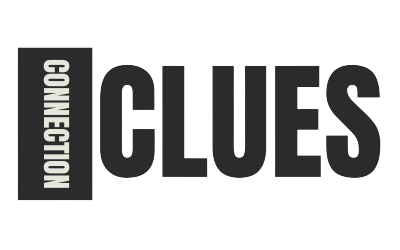In today’s competitive market, success isn’t just about having a great product or service—it’s about reaching the right people. That starts with defining your target client.
A target client is the specific type of customer most likely to buy from you, benefit from your offerings, and stay loyal over time. Instead of wasting resources on broad marketing, businesses that focus on their ideal clients see higher conversions, stronger relationships, and increased profitability.
In this article, you’ll learn:
- What a target client is
- How to define your ideal client profile (ICP)
- Examples across industries
- Proven strategies to reach your target client
- Tools and tips for long-term success
What Is a Target Client?
A target client is a clearly defined group of people or businesses that your product or service is intended for. They are the individuals or companies most likely to:
- Have a problem you can solve
- Afford your offerings
- Appreciate your value
- Make repeat purchases
Defining your target client helps you tailor your:
- Marketing messages
- Product development
- Sales strategies
- Customer service experience
Key Difference: A target audience is broader. A target client is more specific and sales-focused.
Why Identifying Your Target Client Matters
| Benefit | Impact on Business |
| Increased marketing ROI | Less waste on ineffective channels |
| Higher conversion rates | Messaging is aligned with real client needs |
| Improved product/service delivery | You solve problems that matter to your best buyers |
| Better customer relationships | Trust builds faster with relevant, helpful content |
| Streamlined sales process | Qualify leads faster and reduce closing time |
How to Define Your Ideal Target Client
Analyze Your Existing Customers
Start with your current best clients. Ask:
- Who brings in the most revenue?
- Who is the easiest to work with?
- Who refers to others?
Look for trends in demographics, behaviors, and industries.
Build a Client Avatar (Buyer Persona)
Create a detailed profile of your target client, including:
| Attribute | Example |
| Name | “Sarah, the Solo Lawyer” |
| Age | 35–50 |
| Job Title/Industry | Legal/Professional Services |
| Income Level | $100K+ |
| Pain Points | Time management, finding clients |
| Goals | Scale business, increase recurring revenue |
| Preferred Platforms | LinkedIn, email, webinars |
The more specific, the better.
Identify Psychographics and Behaviors
Go beyond demographics. Understand:
- Values and beliefs
- Buying triggers
- Objections or doubts
- Decision-making habits
Use Surveys and Interviews
Talk directly to past or potential clients. Ask:
- Why did you choose us?
- What problem were you trying to solve?
- How did you find us?
Target Client Examples by Industry
| Industry | Target Client Example |
| Marketing Agency | E-commerce brands doing $500K–$5M annually |
| Real Estate Agent | First-time homebuyers aged 28–40 in Austin, TX |
| SaaS Company | Mid-sized HR departments with 50–500 employees |
| Personal Trainer | Busy professionals over 35 who want private sessions |
| B2B Consultant | Law firms struggling with client intake or automation |
Where to Find Your Target Clients
Online Communities
- Facebook groups, LinkedIn groups, Slack channels
- Niche forums and Reddit threads
Search Engines
- Use SEO and content marketing to attract clients via Google
- Target long-tail keywords relevant to their pain points
Industry Events
- Conferences, summits, trade shows—great for B2B and niche verticals
Email Marketing
- Build segmented lists to send relevant content and offers
Paid Ads
- Use Facebook, Google, and LinkedIn Ads with custom audience targeting
Referrals and Partnerships
- Ask current clients for intros
- Collaborate with service providers who serve the same audience
How to Attract Your Target Client with Content
Create Value-Based Content
- Blog posts solving their specific problems
- Case studies showing real results
- Webinars and workshops tailored to their industry
Use Their Language
Mirror the words and phrases your target clients use in emails, reviews, and conversations.
Focus on Outcomes
Don’t just list features—explain how you’ll improve their lives or businesses.
Example: Instead of “CRM with automation,” say “Save 10+ hours a week with hands-free lead nurturing.”
Tools to Help You Identify and Reach Your Target Client
| Tool | Purpose |
| Google Analytics | Track audience behavior and demographics |
| Meta Ads Manager | Build custom audiences for Facebook/IG |
| LinkedIn Sales Navigator | Identify B2B leads and ICPs |
| SEMrush or Ahrefs | Find keywords your target client searches |
| SurveyMonkey | Collect data through questionnaires |
| HubSpot CRM | Track lead sources and conversion rates |
Metrics to Measure Target Client Engagement
| Metric | What It Tells You |
| Website conversion rate | Are the right people taking action? |
| Lead quality score | Are inquiries aligned with your ICP? |
| Email open/click rates | Is your messaging resonating with your audience? |
| Client retention rate | Do your best-fit clients stay and refer others? |
| ROI by marketing channel | Which platforms bring in your ideal clients? |
Conclusion
Defining your target client isn’t just a marketing task—it’s a business essential. By getting laser-focused on who your ideal client is, you’ll:
- Save time and money
- Create stronger relationships
- Convert more leads
- Grow your business more predictably
Take Action: Build your client avatar today and refine your messaging to speak directly to them.
FAQs
1. What is a target client vs a target audience?
A target audience is broader, often used in marketing. A target client is more specific and sales-focused—usually someone ready to buy.
2. How do I find my target client?
Study your best existing clients, use analytics tools, interview customers, and build detailed buyer personas.
3. Can my business have more than one target client?
Yes, especially if you offer multiple services. Just ensure you create unique messaging and strategies for each segment.
4. What if I target the wrong client?
You’ll waste time and budget attracting unqualified leads. That’s why refining your ICP (Ideal Client Profile) is crucial.
5. How often should I update my target client profile?
At least once a year—or whenever your offerings or the market shift significantly.
Also read: Starting a Staffing Agency: Step-by-Step Guide for 2025 Success









